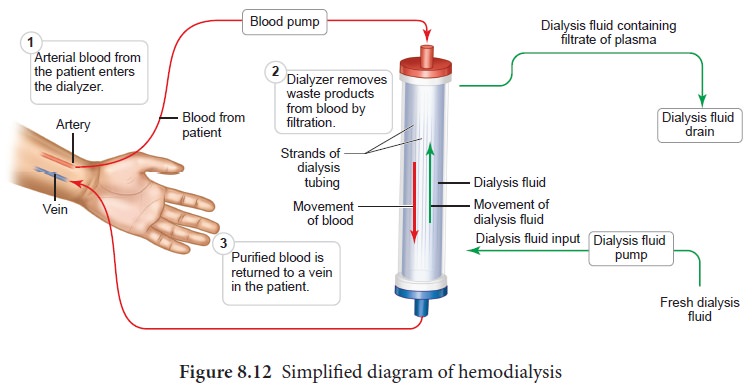Process, Diagram - Haemodialysis | 11th Zoology : Chapter 8 : Excretion
Chapter: 11th Zoology : Chapter 8 : Excretion
Haemodialysis

Haemodialysis
Malfunctiong of the kidneys can lead to
accumalation of urea and other toxic substances, leading to kidney failure. In
such patients toxic urea can be removed from the blood by a process called
haemodialysis. A dialyzing machine or an artificial kidney is connected to the
patient’s body. A dialyzing machine consists of a long cellulose tube
surrounded by the dialysing fluid in a water bath. The patient’s blood is drawn
from a conveinent artery and pumped into the dialysing unit after adding an
anticoagulant like heparin. The tiny pores in the dialysis tube allows small
molecules such as glucose, salts and
This stage is similar to
the filtration process in the glomerulus. The dialysing liquid in the water
bath consists of solution of salt and sugar in correct proportion in order to
prevent loss of glucose and essential salts from the blood. The cleared blood
is then pumped back to the body through a vein.

Kidney Transplantation
It is the ultimate method for correction of acute
renal failures. This involves transfer of healthy kidney from one person
(donor) to another person with kidney failure. The donated kidney may be taken
from a healthy person who is declared brain dead or from sibling or close
relatives to minimise the chances of rejection by the immune system of the
host. Immunosuppressive drugs are usually administered to the patient to avoid
tissue rejection.
Related Topics